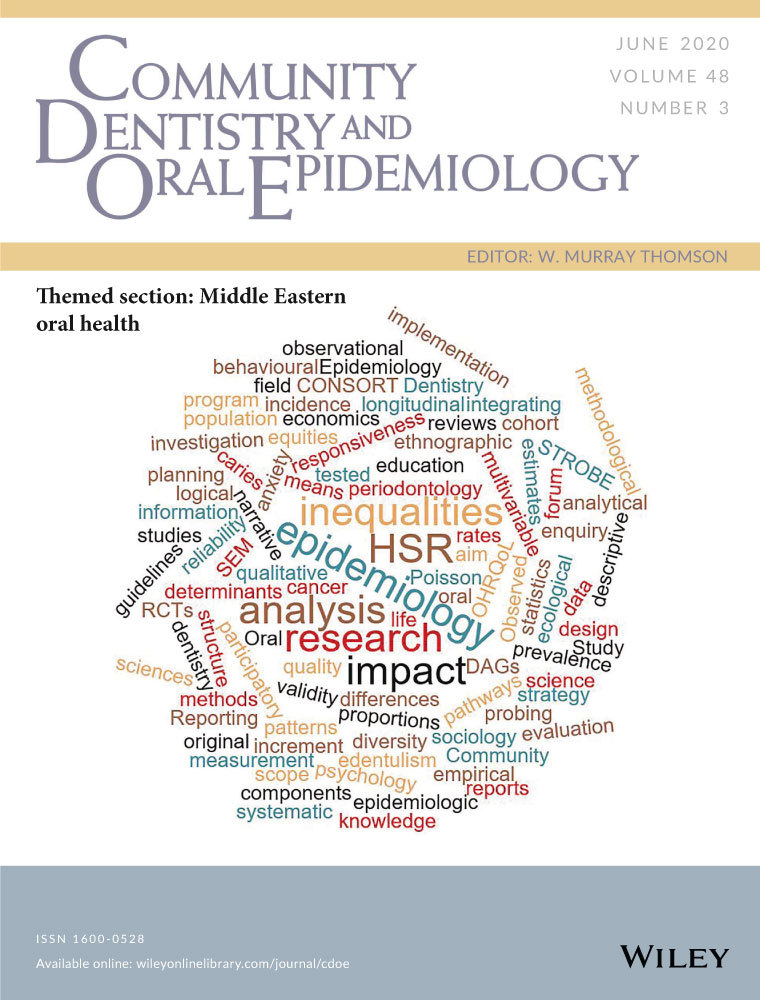Depression, drugs and dental anxiety in prisons: A mediation model explaining dental decay experience
Abstract
Objective
To test a theoretical mediation model and investigate whether drug use and/or dental anxiety act as mediating factors between depression and dental decay experience among prisoners.
Method
A cross-sectional survey was conducted on a convenience sample of 300 prisoners across three prison establishments in Scotland. Depression and dental anxiety were measured using the Centre for Epidemiological Studies Depression Scale and the Modified Dental Anxiety Scale, respectively. Drug use was assessed using three yes (scoring 1)/ no (scoring 0) questions: ‘ever taken (illegal) drugs’, ‘injecting drugs’ and ‘ever participated in a rehabilitation programme’. Participants had an oral examination to determine dental caries experience (missing [MT] and untreated decay [D3cvT]) in all four quadrants. Latent variable path analysis was conducted to test the mediation model.
Results
A total of 342 prisoners participated, of which 298 yielded a complete data set. Depression was associated with missing teeth and untreated decay (D3T) through an indirect pathway (Total standardized indirect effects = 0.11, P < .01) via drug use and dental anxiety (X2 [71] = 89.8, P = .07; Root Mean Square Error of Approximation: 0.03; Comparative Fit Index: 0.994 and Tucker-Lewis index: 0.992). Twenty-two percent of the variance in untreated decay and missing teeth was explained by both drug use and dental anxiety; however, the strongest predictor was drug use (total standardized direct effects = 0.45, P < .001).
Conclusion
A relatively simple model to assist understanding dental decay experience of people in prison has been proposed. The data collected were consistent with our specified model. Drug use acted as the primary mediator and dental anxiety as a secondary mediator between depression and dental decay experience. Given the co-morbidity between mental health and drug use and dental decay experience, an integrated or shared approach is proposed. We recommend that future research should concentrate on building a firmer picture by replicating and extending the framework presented.




